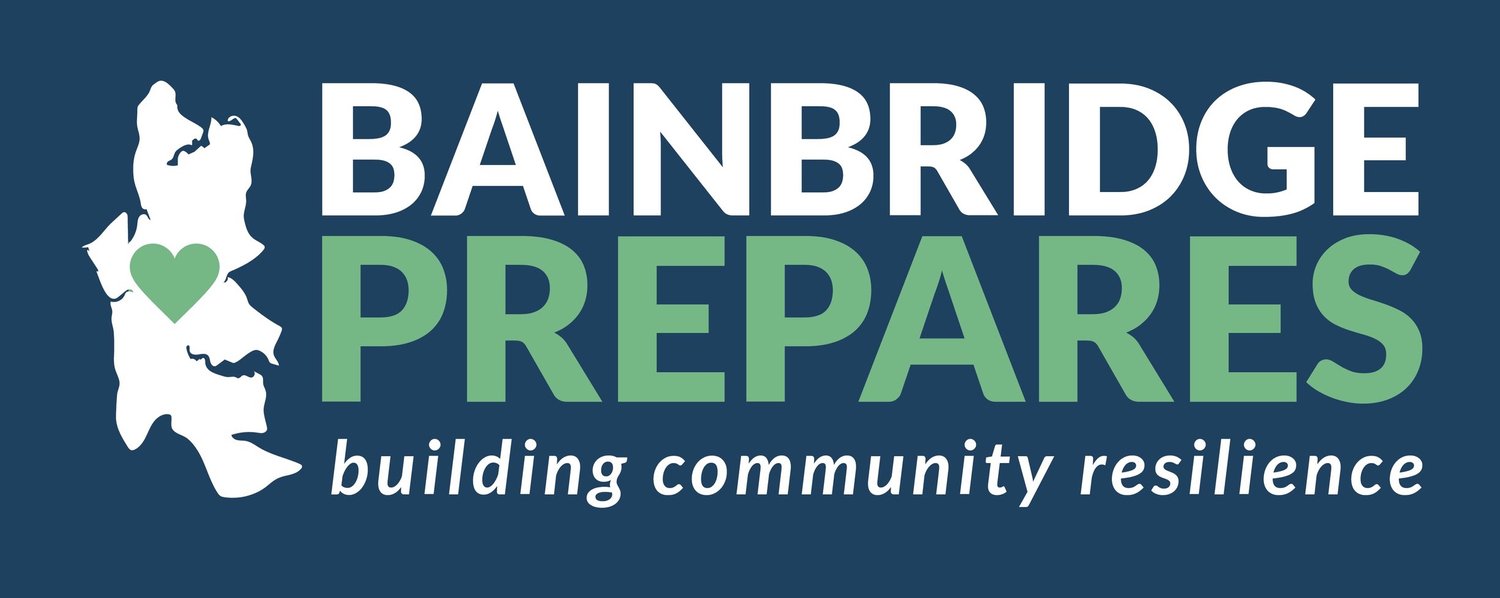Bainbridge Island Is TsunamiReady
Special thanks to City of Bainbridge Island Emergency Management Coordinator Anne LeSage for her tireless work to secure Bainbridge Island as the first city on the inner coast of Washington to earn TsunamiReady status from the National Weather Service.
Related, this is the city’s GIS map for the Seattle Fault inundation with additional information available here.
Overview
Learn more about 2022 tsunami modeling data in this 5-minute video and how Bainbridge Island is preparing for a Seattle Fault Zone seismic event.
Also check out this additional animation modeling about both the Seattle Fault Zone and the Cascadia Subduction Zone.
A Deeper Look
In this one-hour presentation, Elyssa Tappero (Washington State Military Emergency Management Division) and Alex Dolcimascolo (Washington State Department of Natural Resources) present the 2022 tsunami models for Bainbridge Island and the surrounding areas to Bainbridge Prepares volunteers, flotilla members, and others.
Get additional insights from the Washington State Geology Department.
Special thanks to our CERT Team Lead Victor Cheng for this written summary of the 2022 data.
2022 Washington State Geological Survey Tsunami Simulations Key Takeaways
There is only a 2-3–minute lag time between earthquake shaking from a 7.5-magnitude earthquake originating in the Seattle Fault Zone and the first tsunami waves hitting Bainbridge.
Some high Tsunami–risk areas of Bainbridge will face significant inundation depth:
Fay Bainbridge: ~11 feet
Manitou Beach/Murden Cove: ~32 feet
Yeomalt Point: ~ 24 feet
Eagle Harbor: ~21 feet
Pritchard Park ~26 feet
3. In addition for those of you who boat, here are expected wave speeds:
Port Madison: ~ 19 knots
Murden Cove: 25+ knots
Bill Point: 25+ knots
Blakely Harbor: 25+ knots
Restoration Point: 25+ knots
Point White: 25+ knots
Fletcher Bay (entrance): 25+ knots
Agate Passage: 25+ knots
ALERT
If you experience a Seattle Fault earthquake near the shoreline, you have 2 minutes to move to an elevation over 30-40 feet. That’s roughly 3-4 flights of stairs. Help others evacuate if you are able.
If the earthquake originates in the Cascadia Subduction Zone, you have 2 hours to climb to about 10 feet above sea level.
Since you can’t immediately tell which fault caused an earthquake, always assume it’s the Seattle Fault and get to high ground immediately.
Modeling Data from 2018
In this video you’ll find Dr. Erin Wirth, Research Geophysicist with the U.S. Geological Survey and Affiliate Assistant Professor at the University of Washington, presenting “Preparing for the Big One” at our 2019 Day of Preparedness at the Bainbridge Island City Hall.
Also check out this 2018 report Tsunami Hazard Assessment of Bainbridge Island, Washington, Project Report by Vasily V. Titov, Diego Arcas, and Christopher W. Moore (from the Pacific Marine Environment Laboratory, NOAA, Seattle) and Randall J. LeVeque, Loyce M. Adams, and Frank I. Gonzalez (from the University of Washington).




